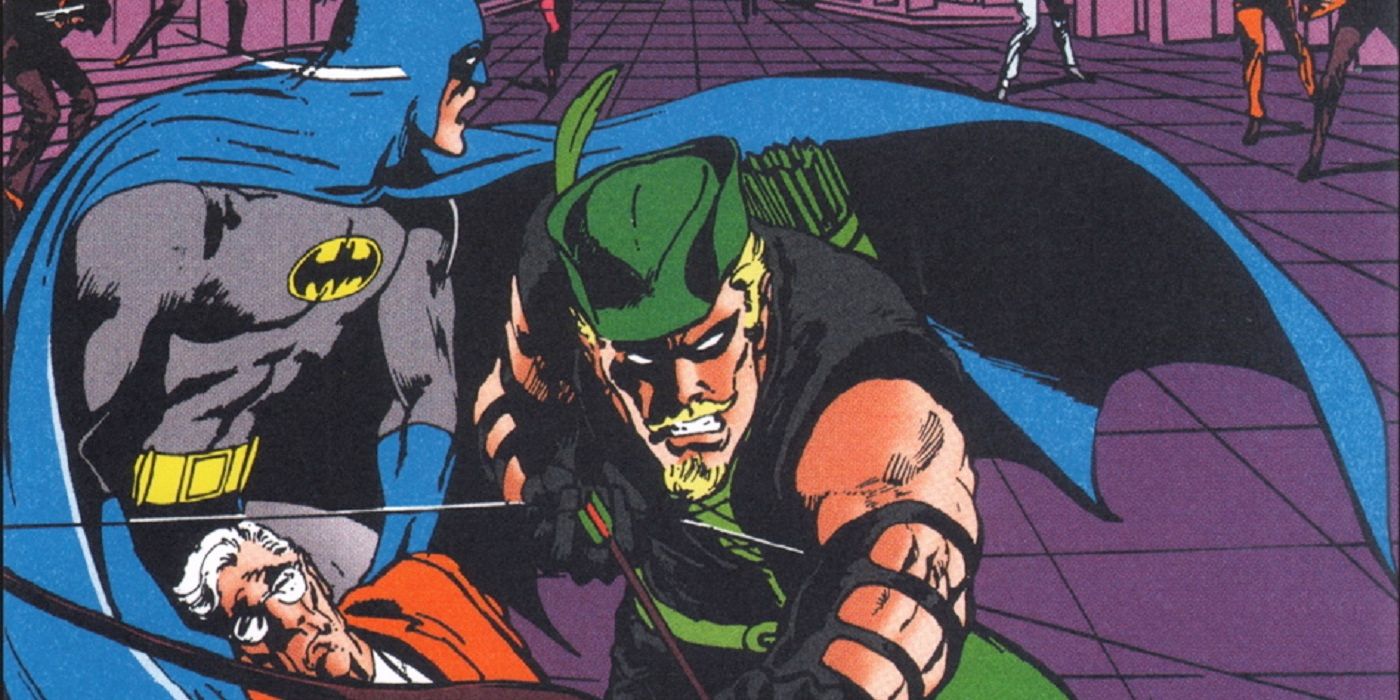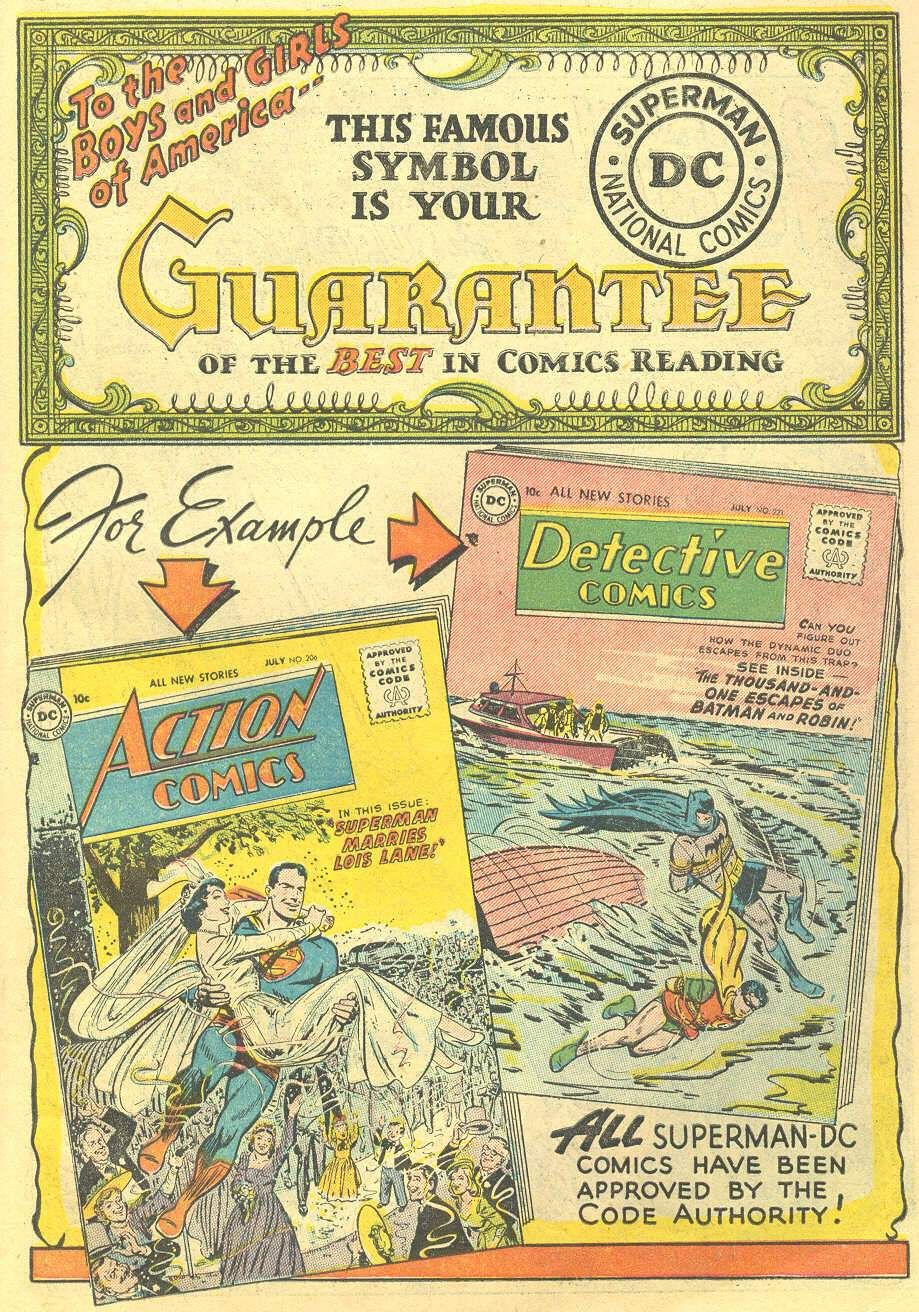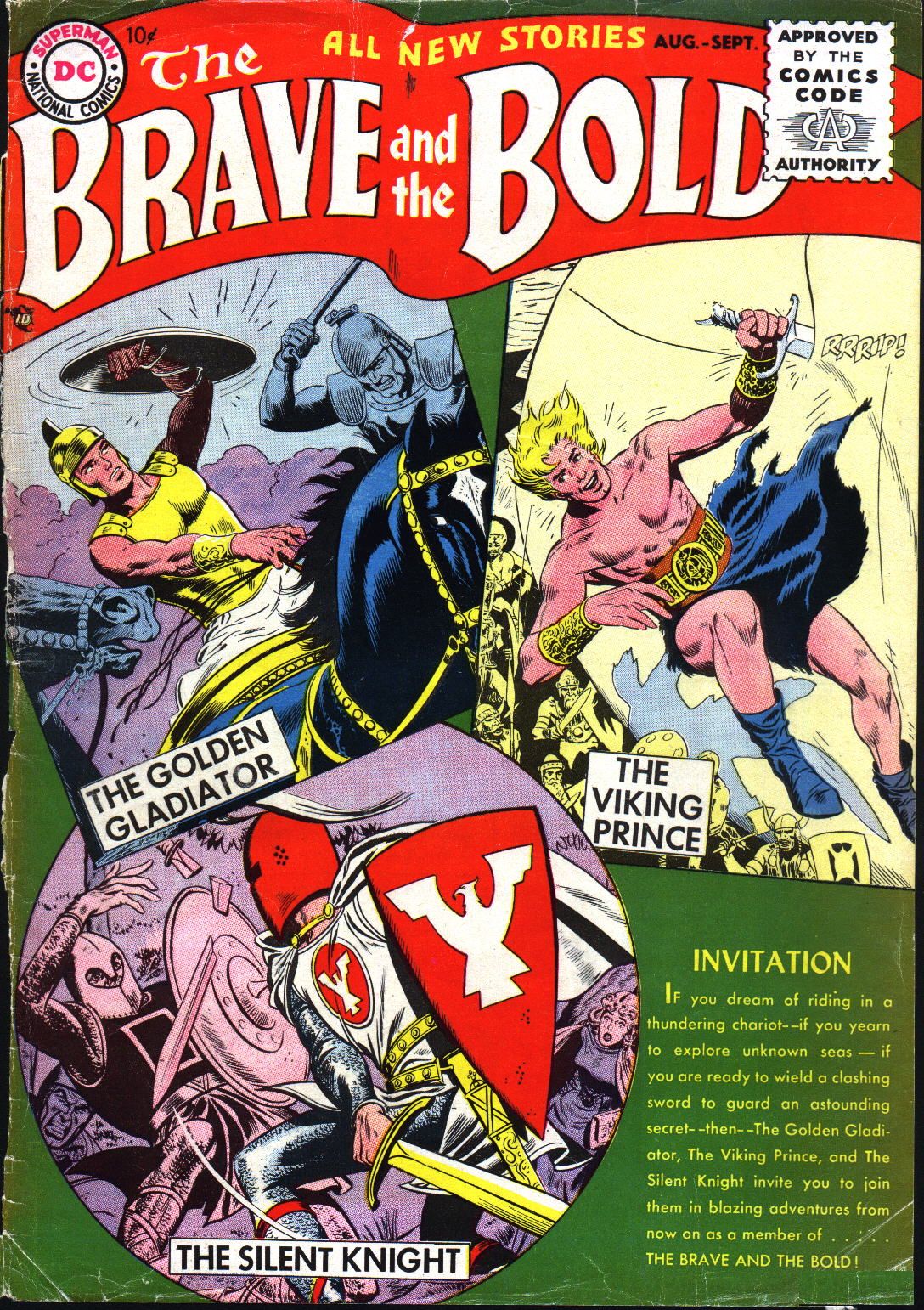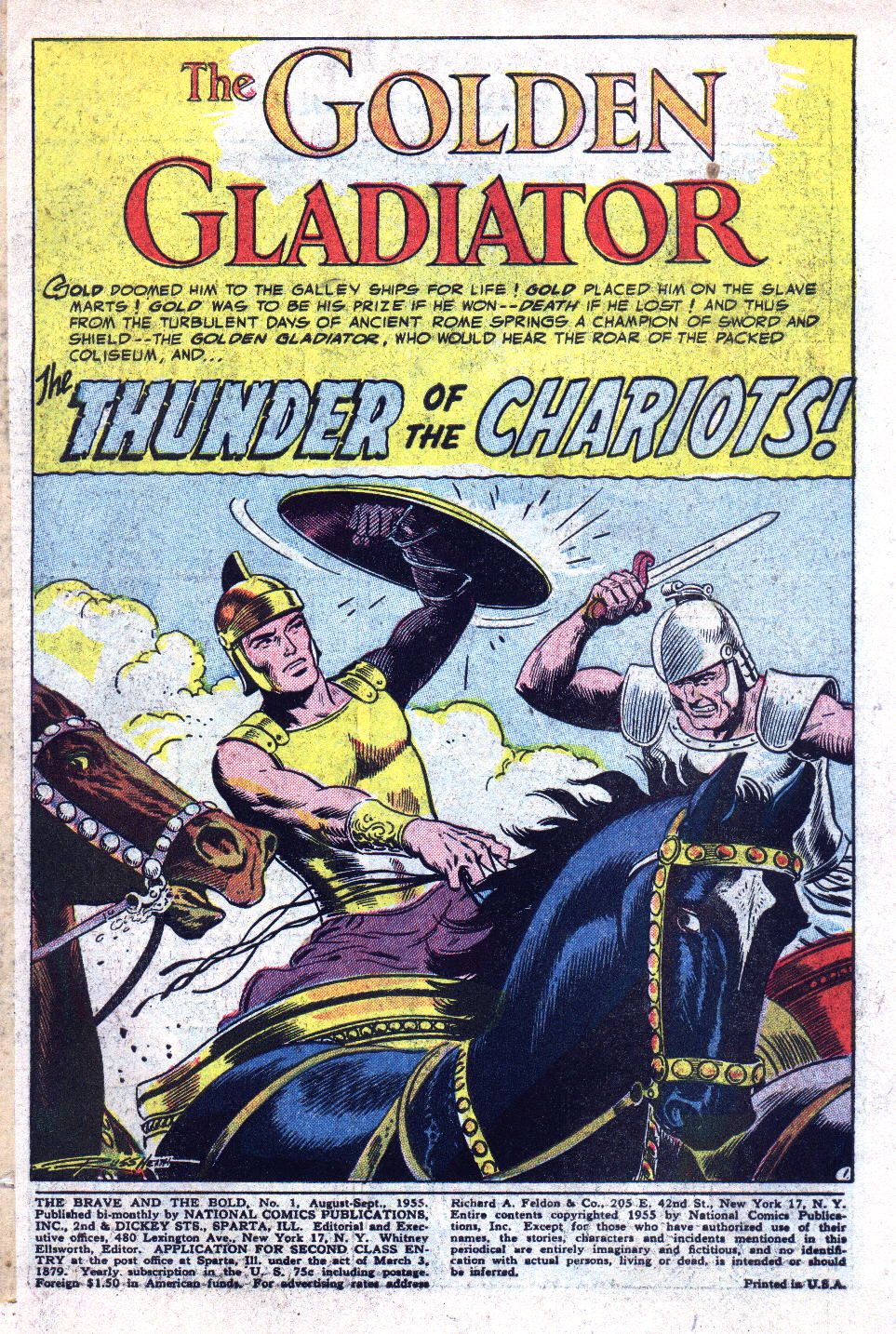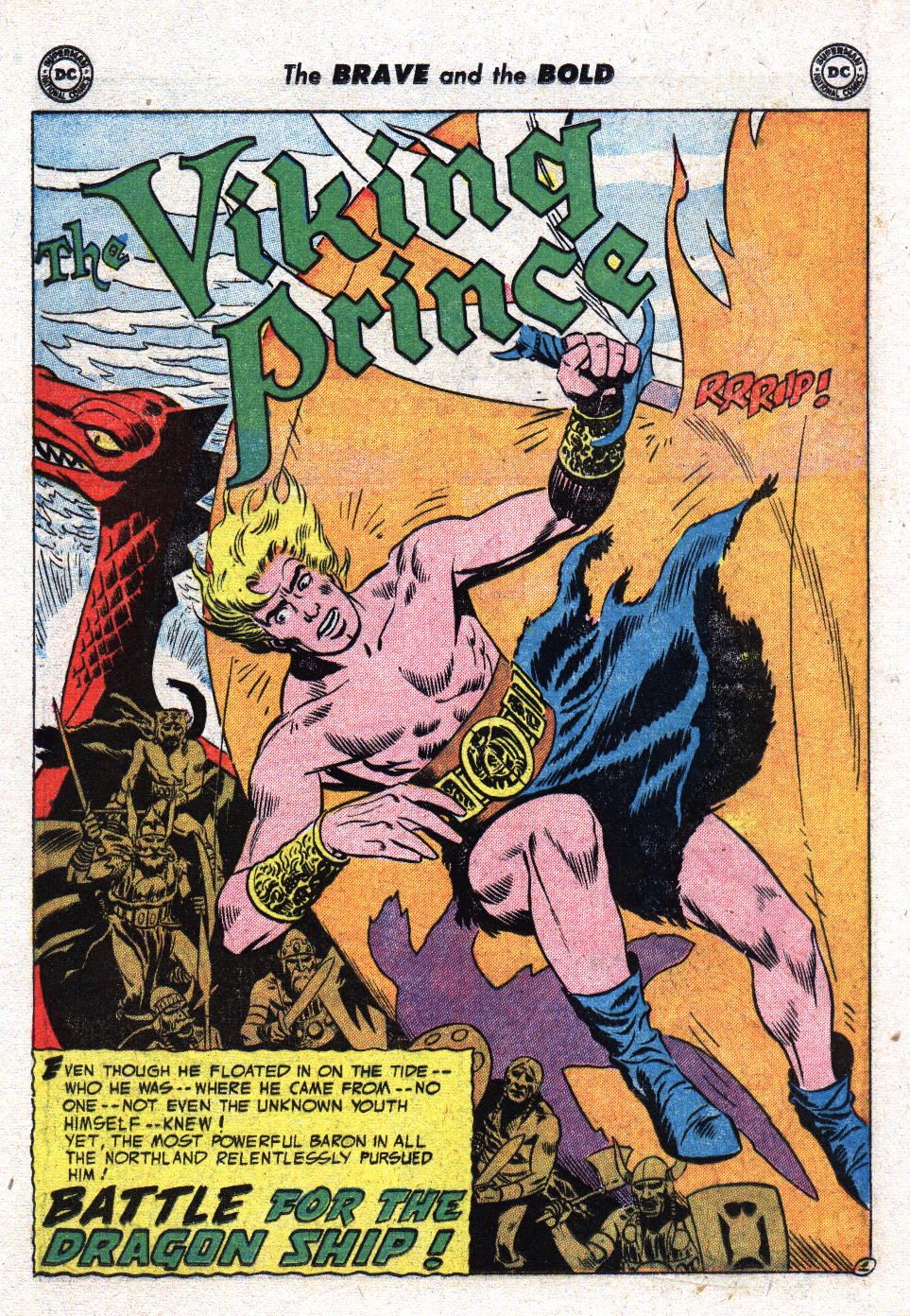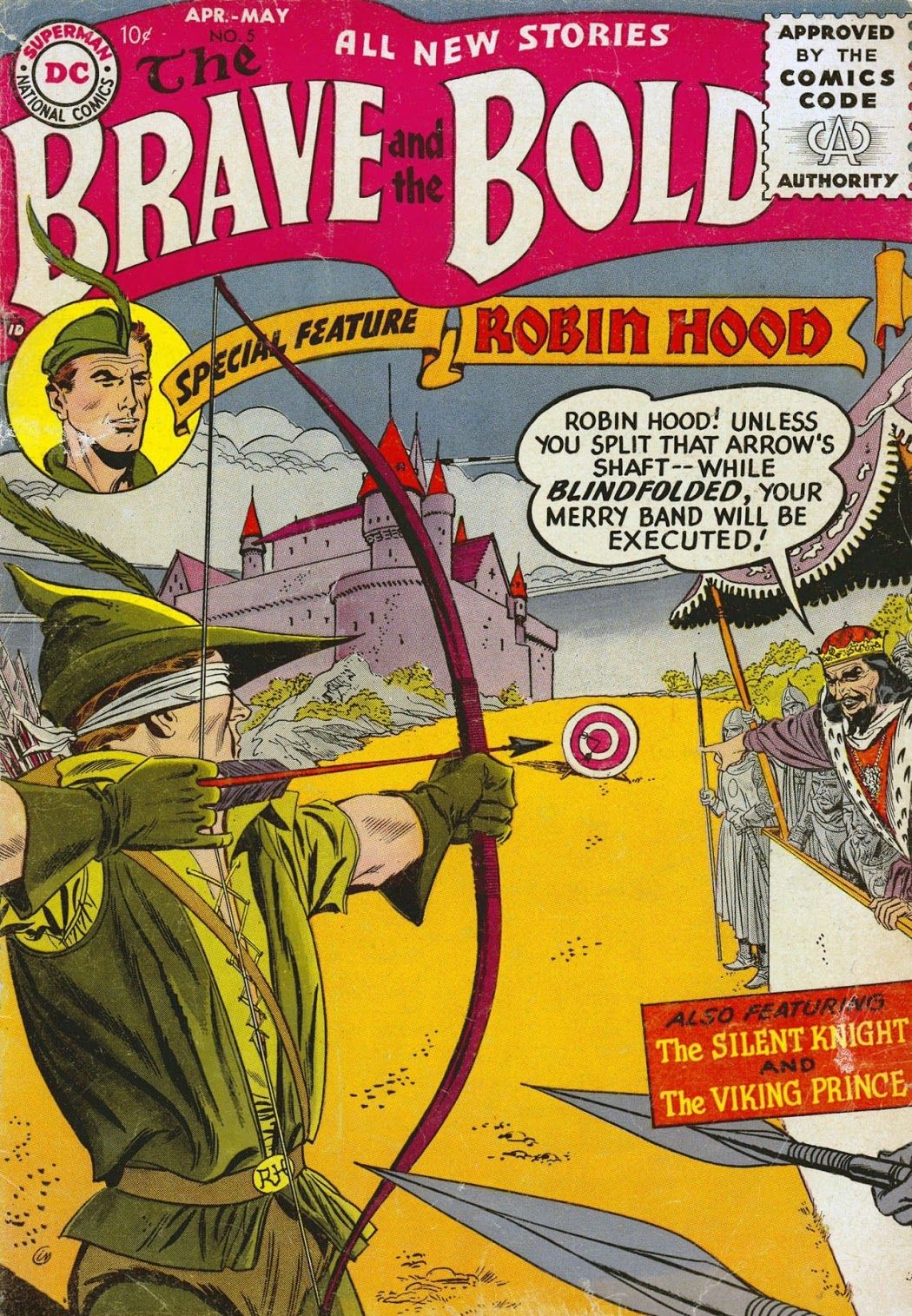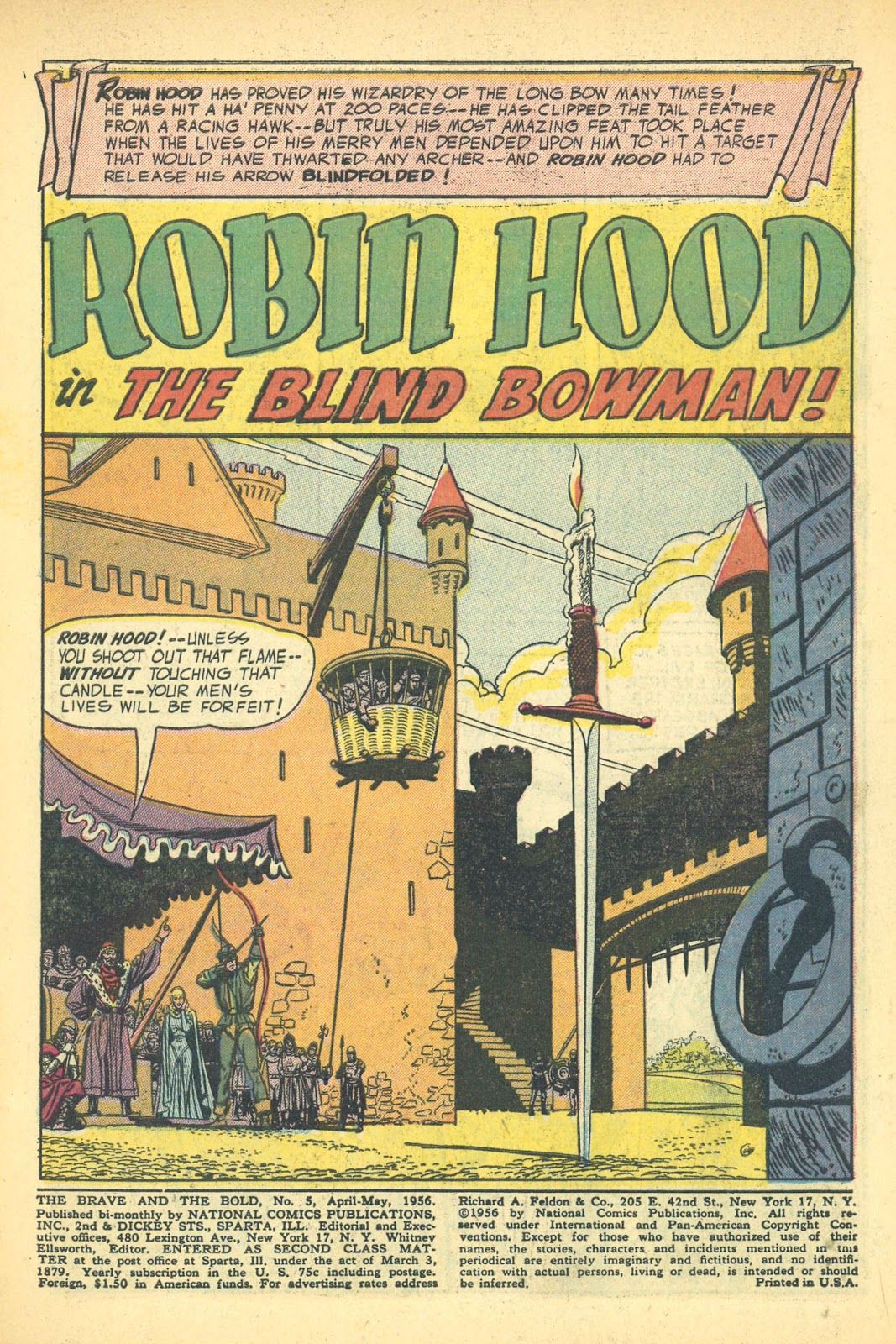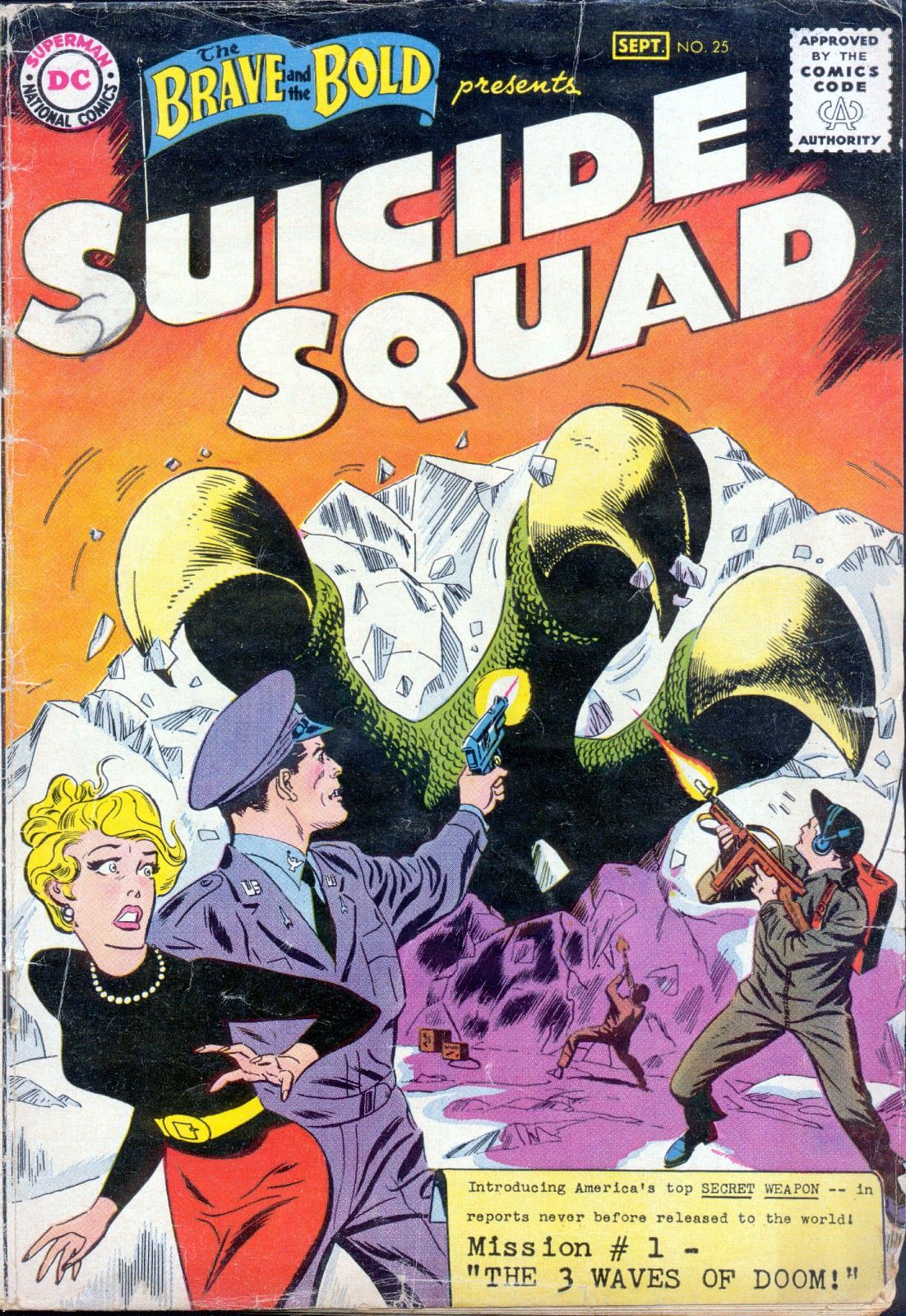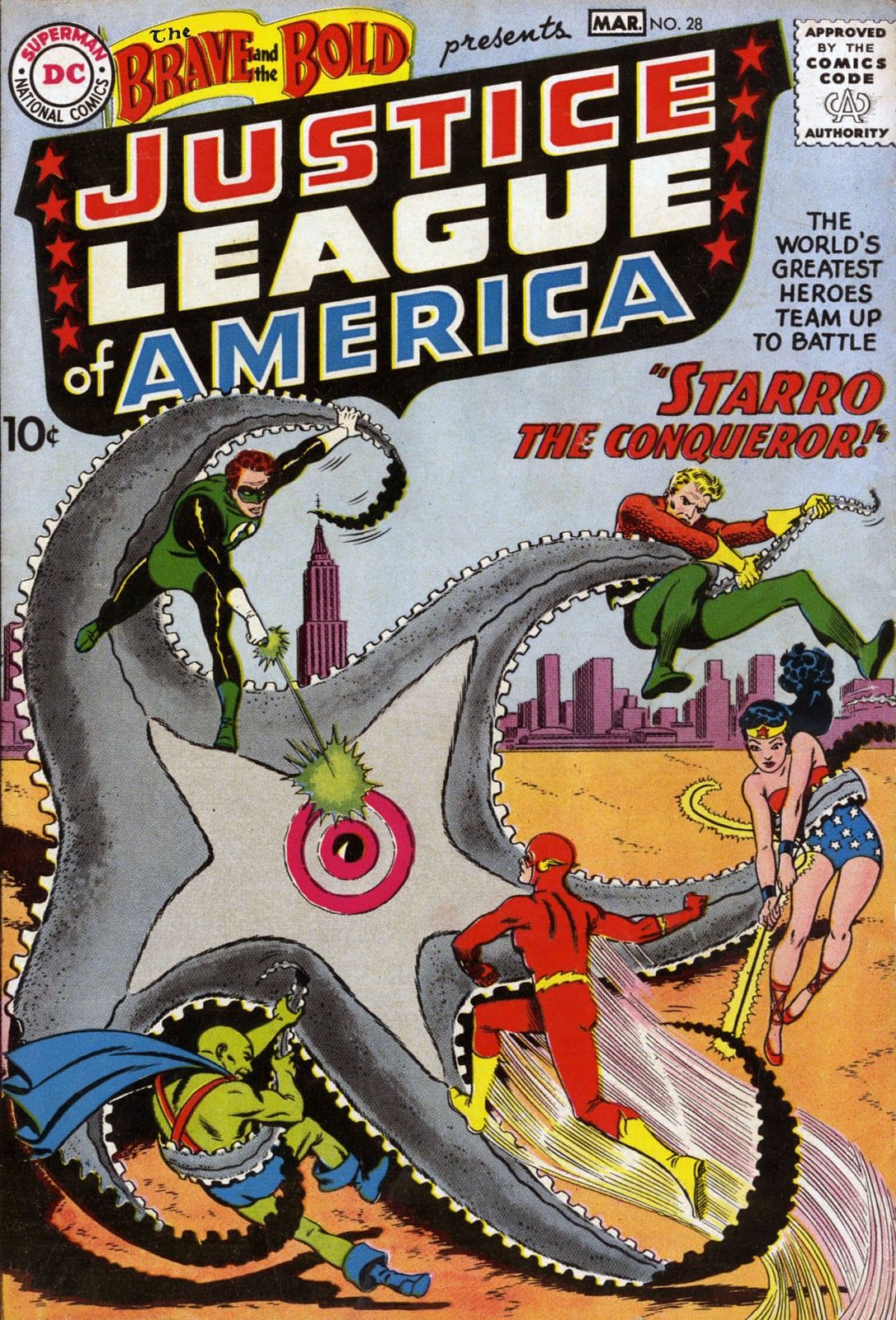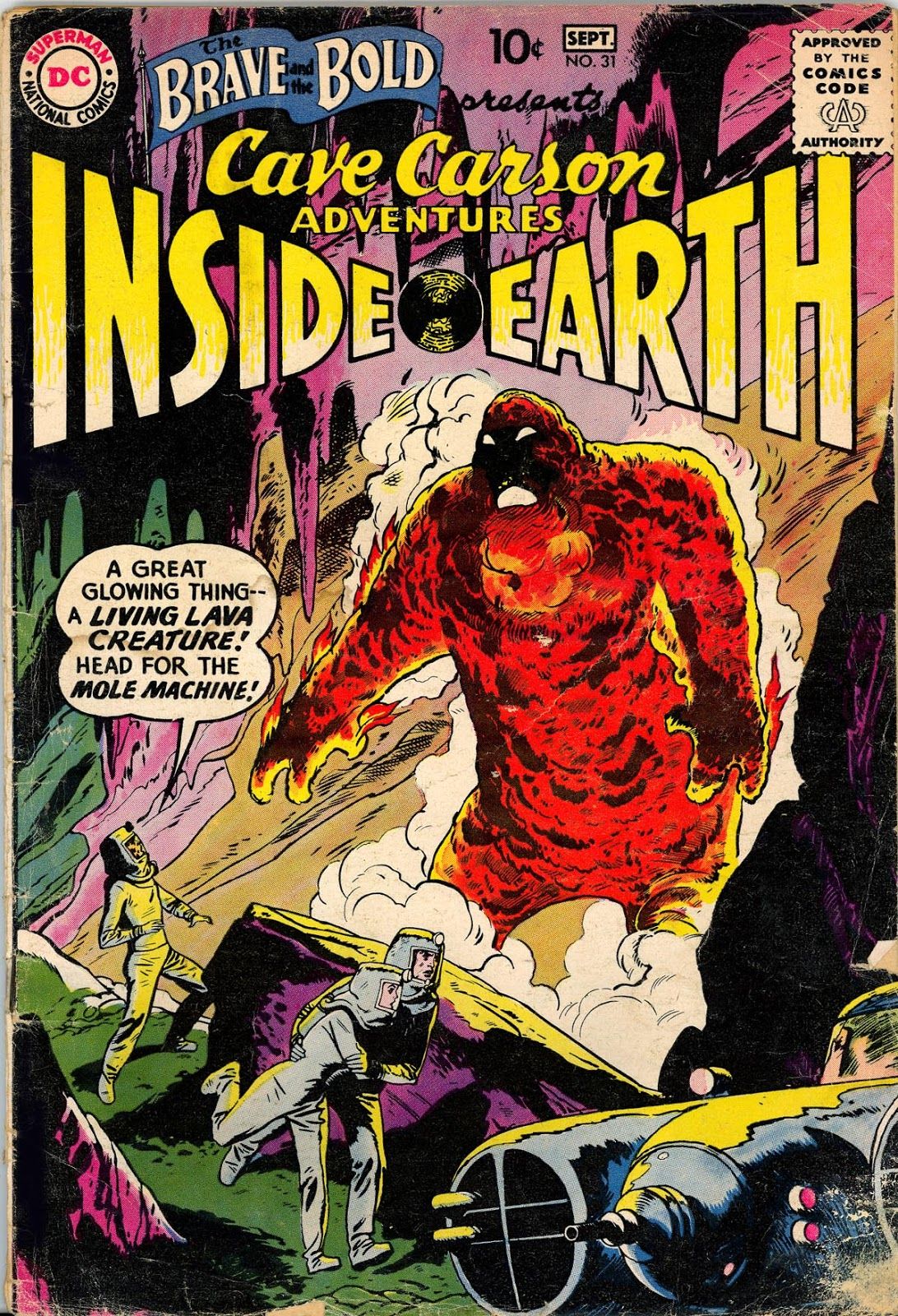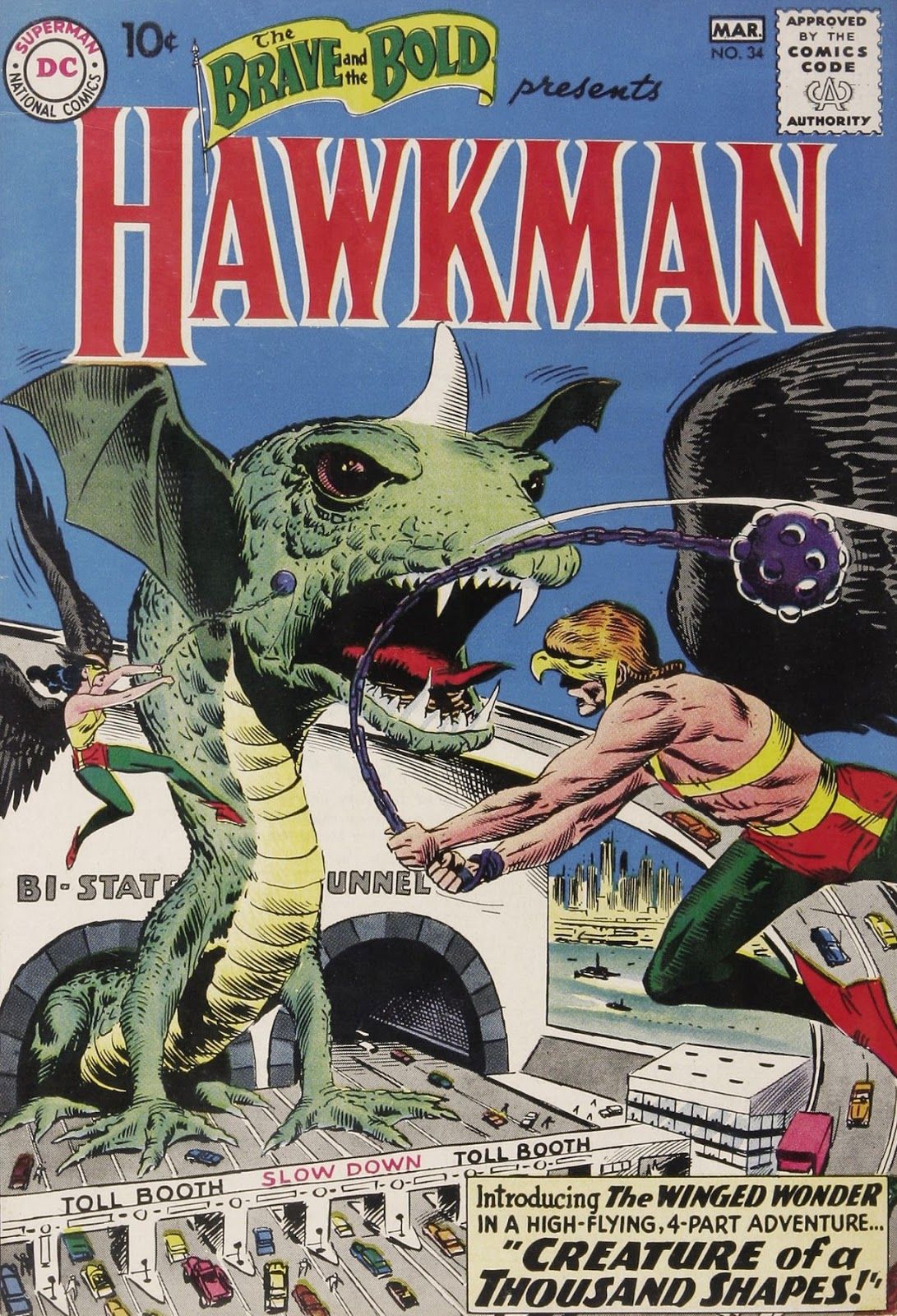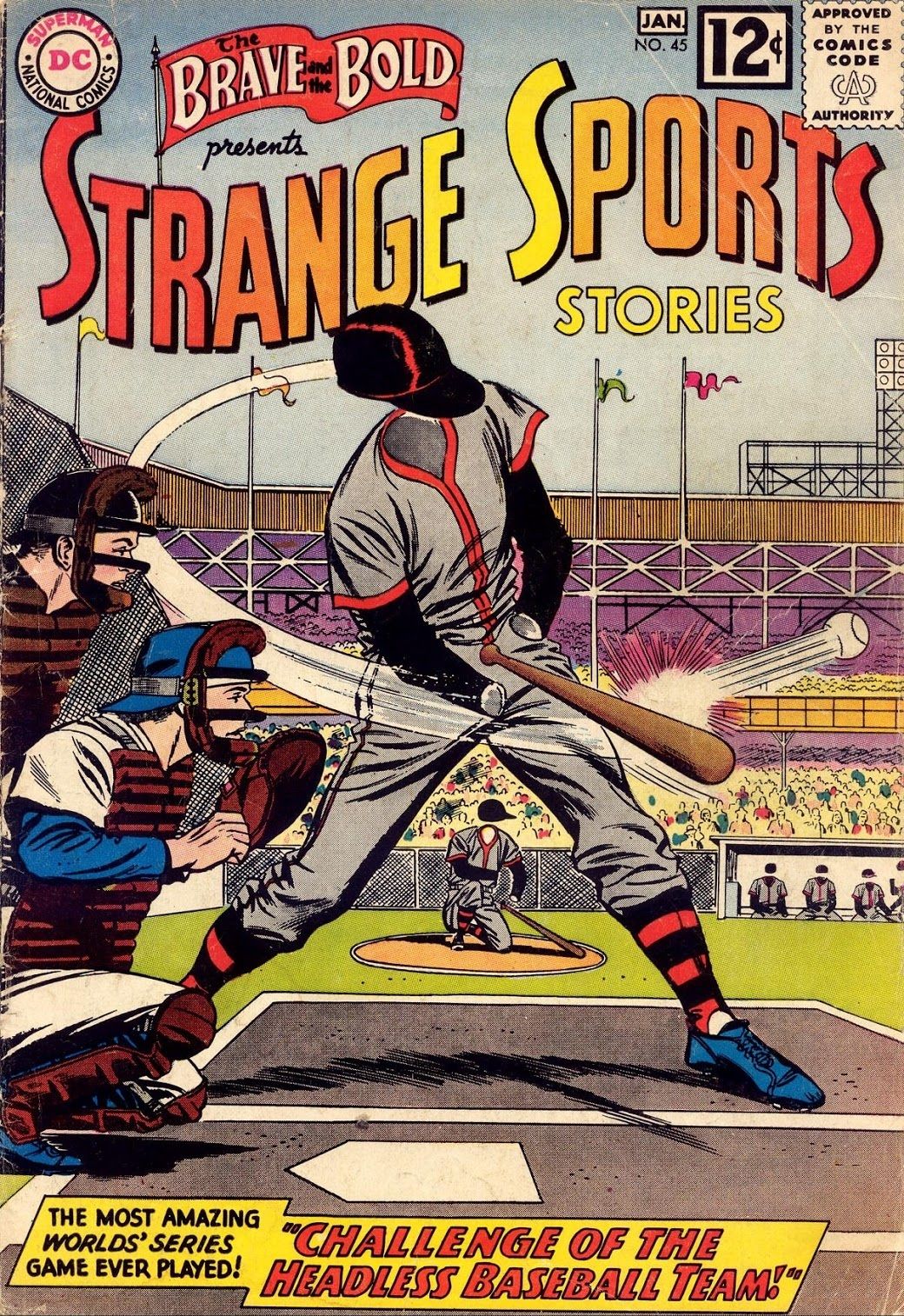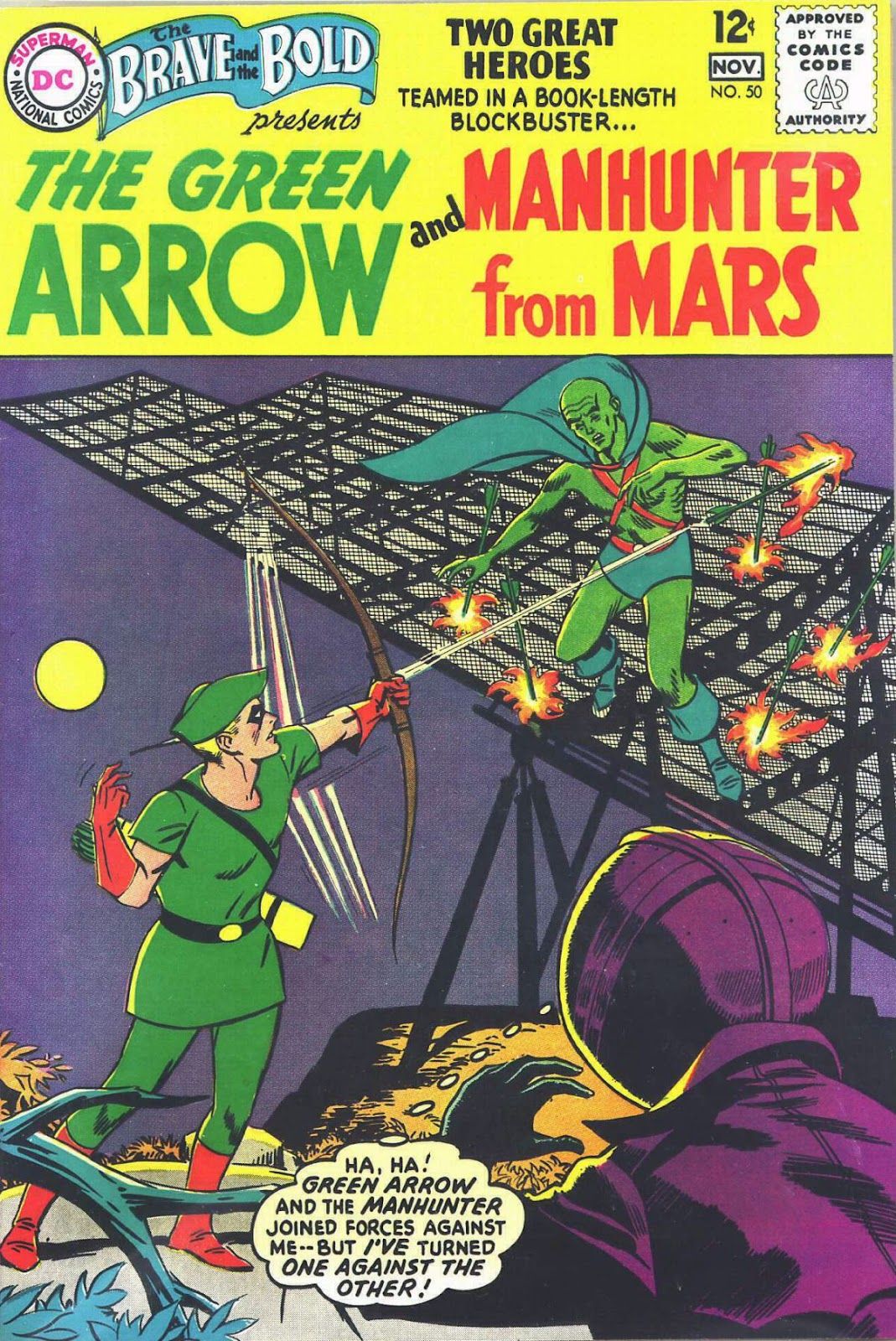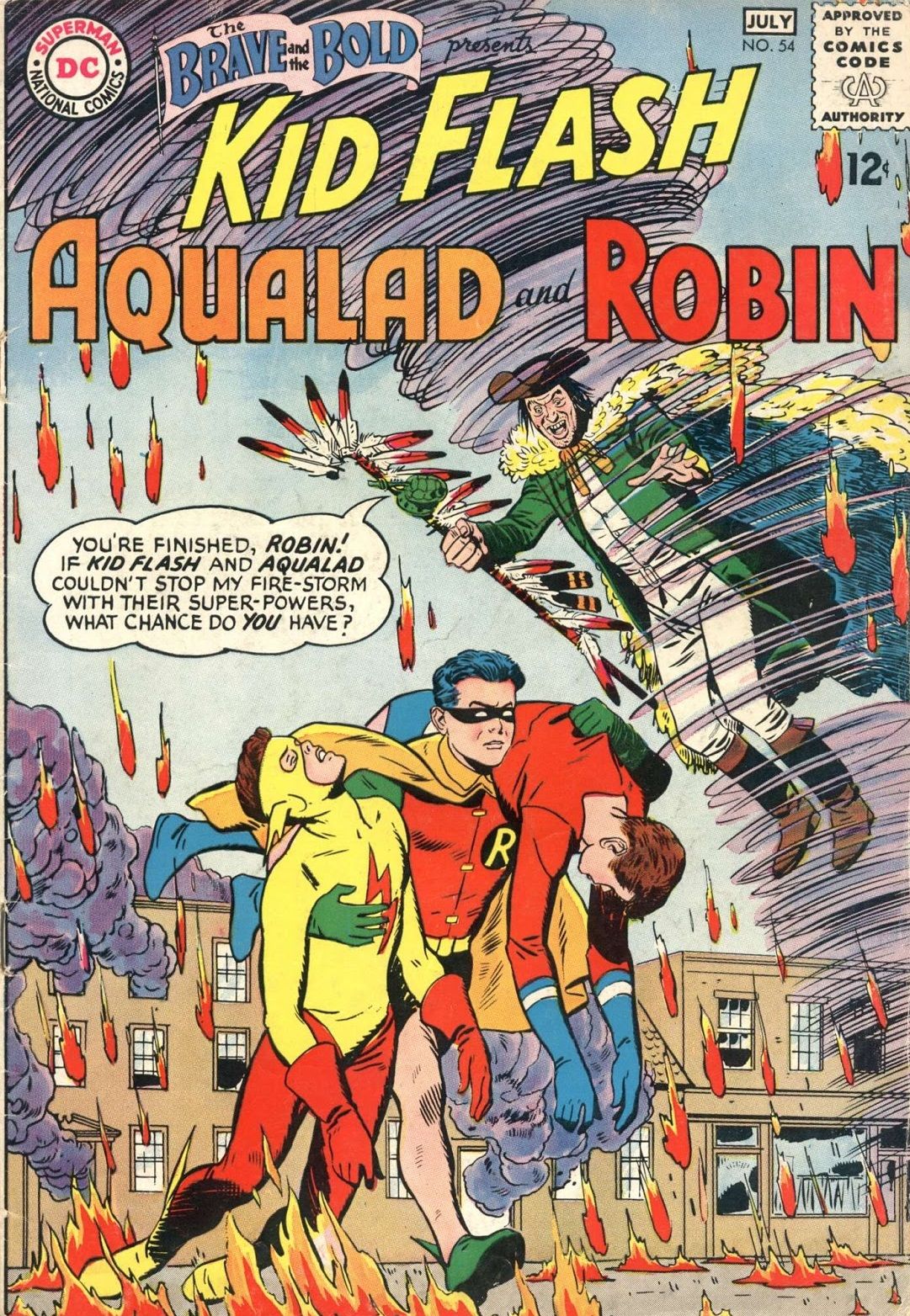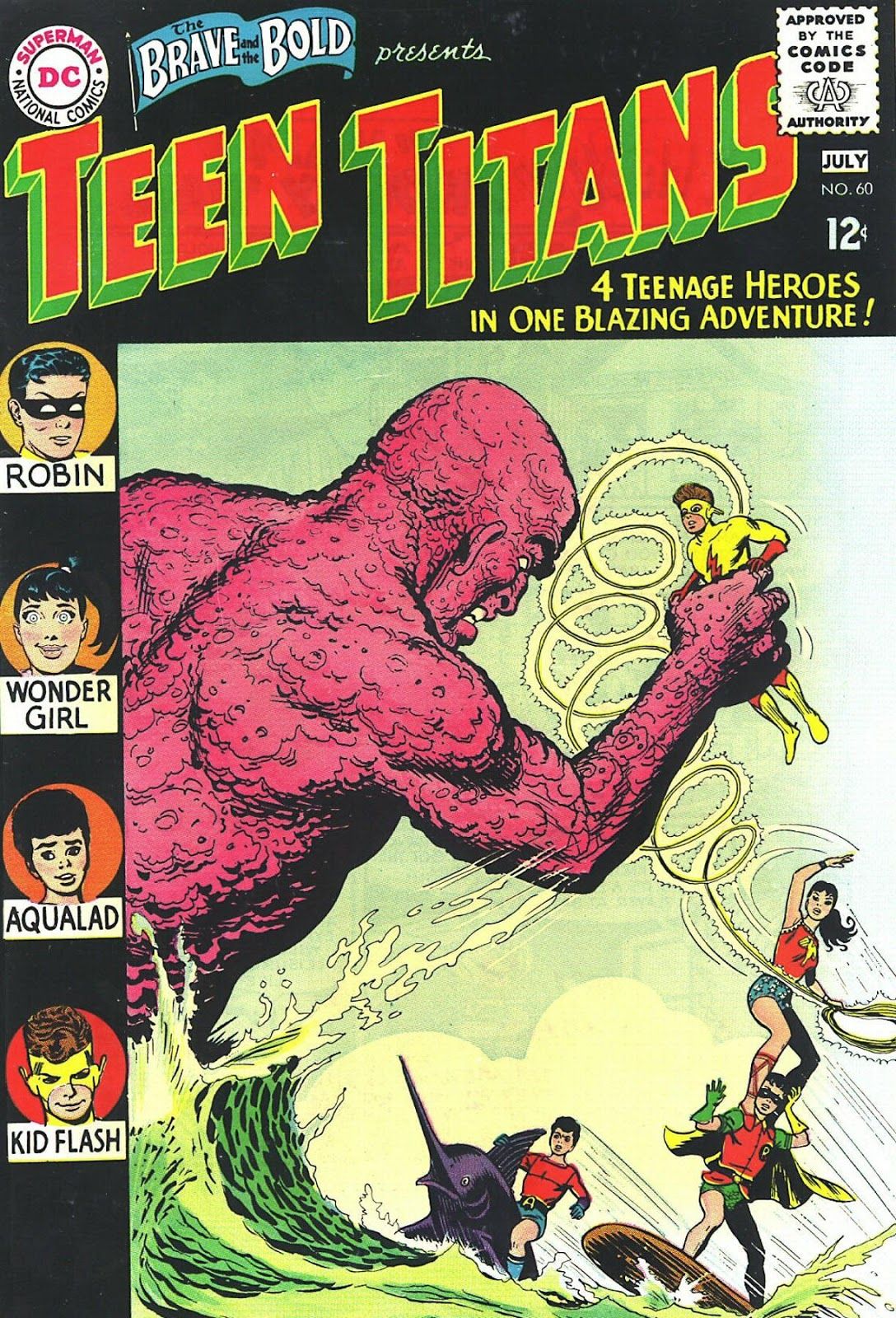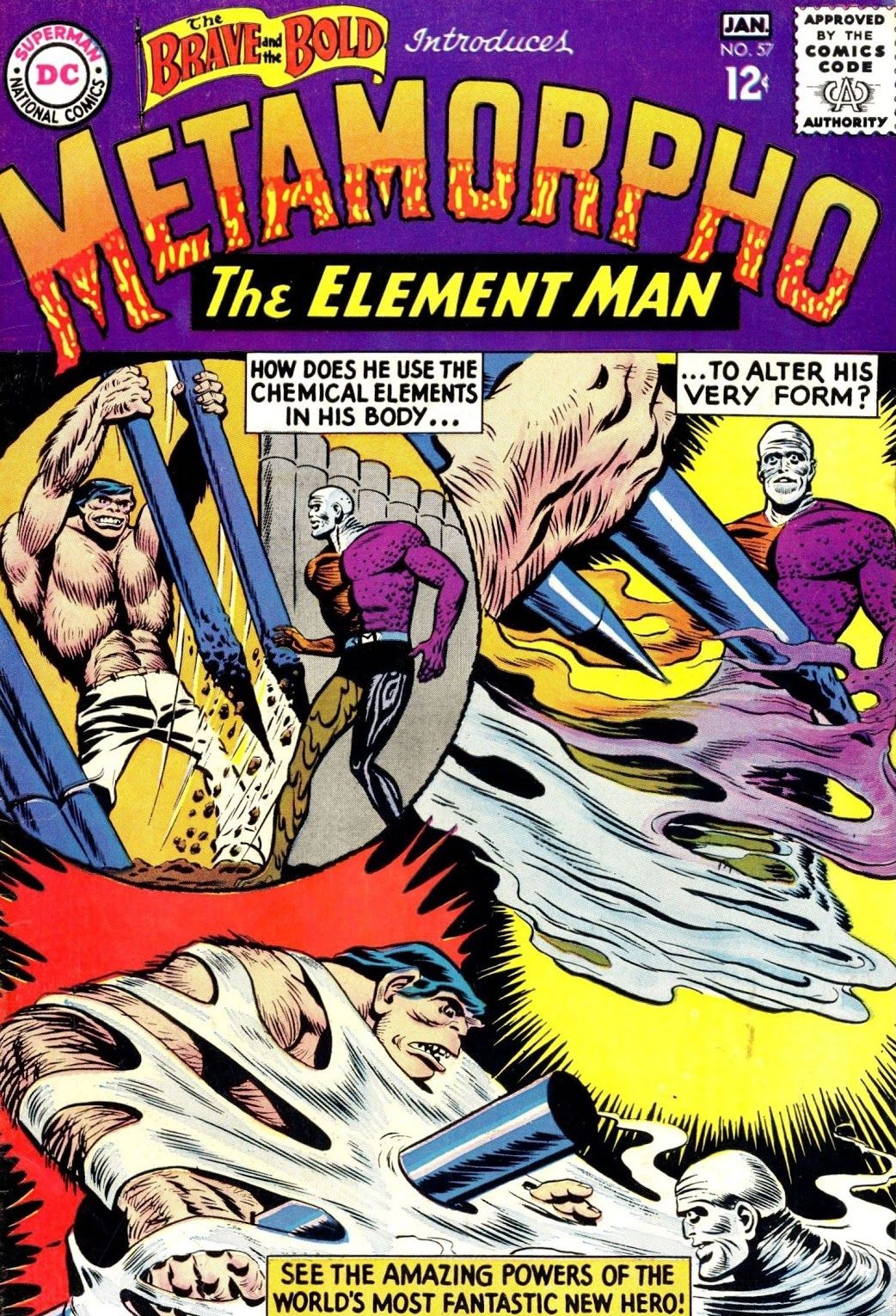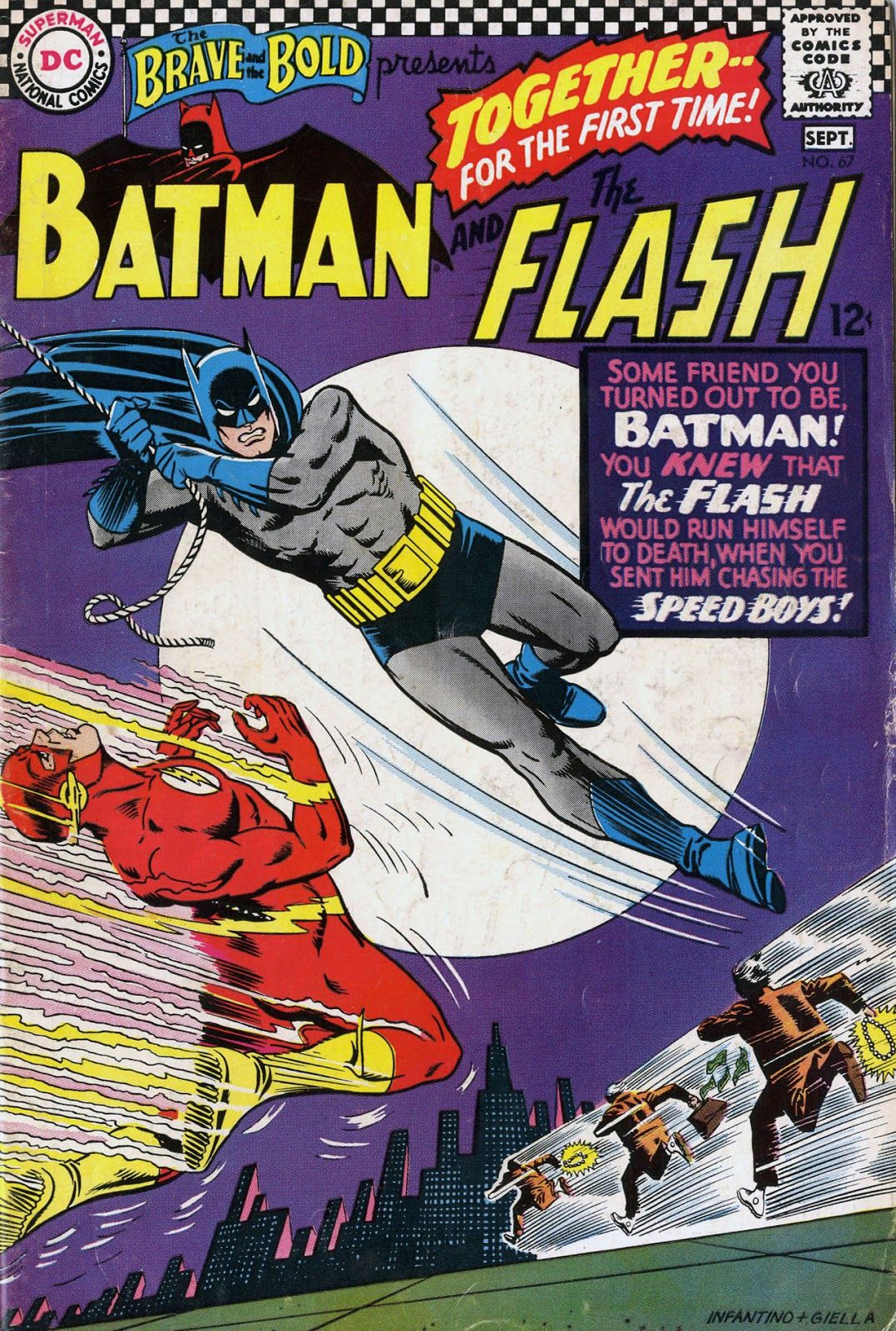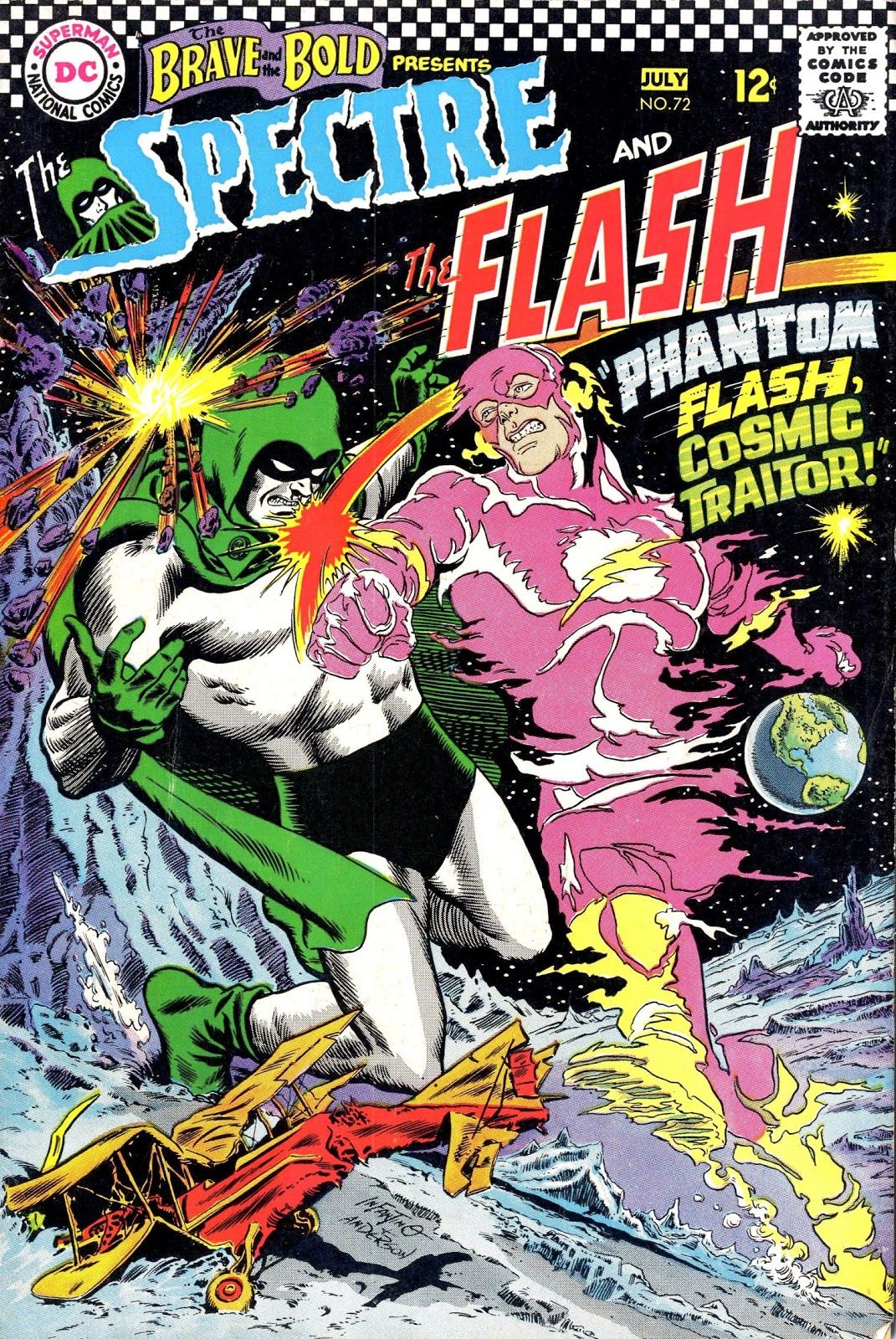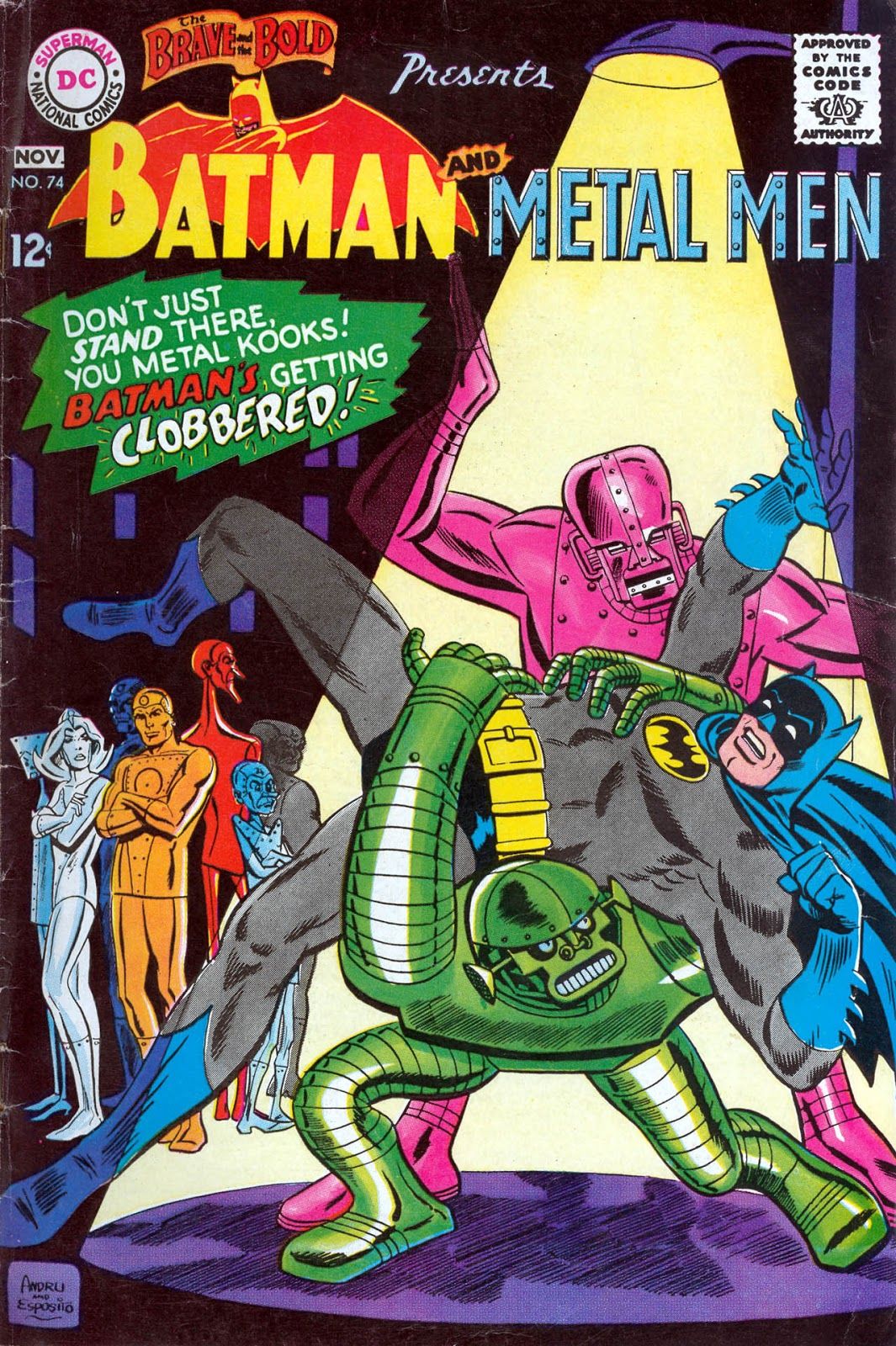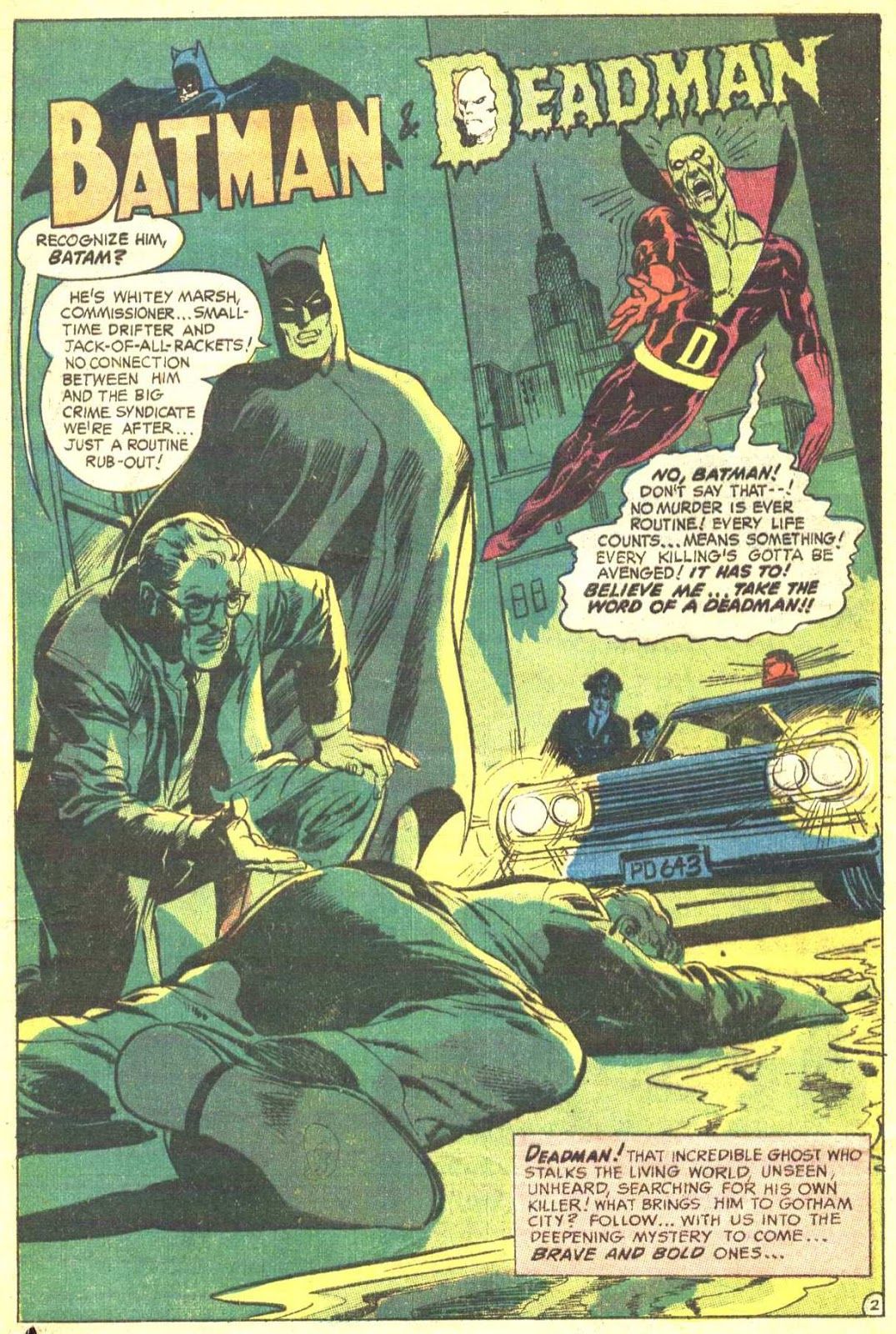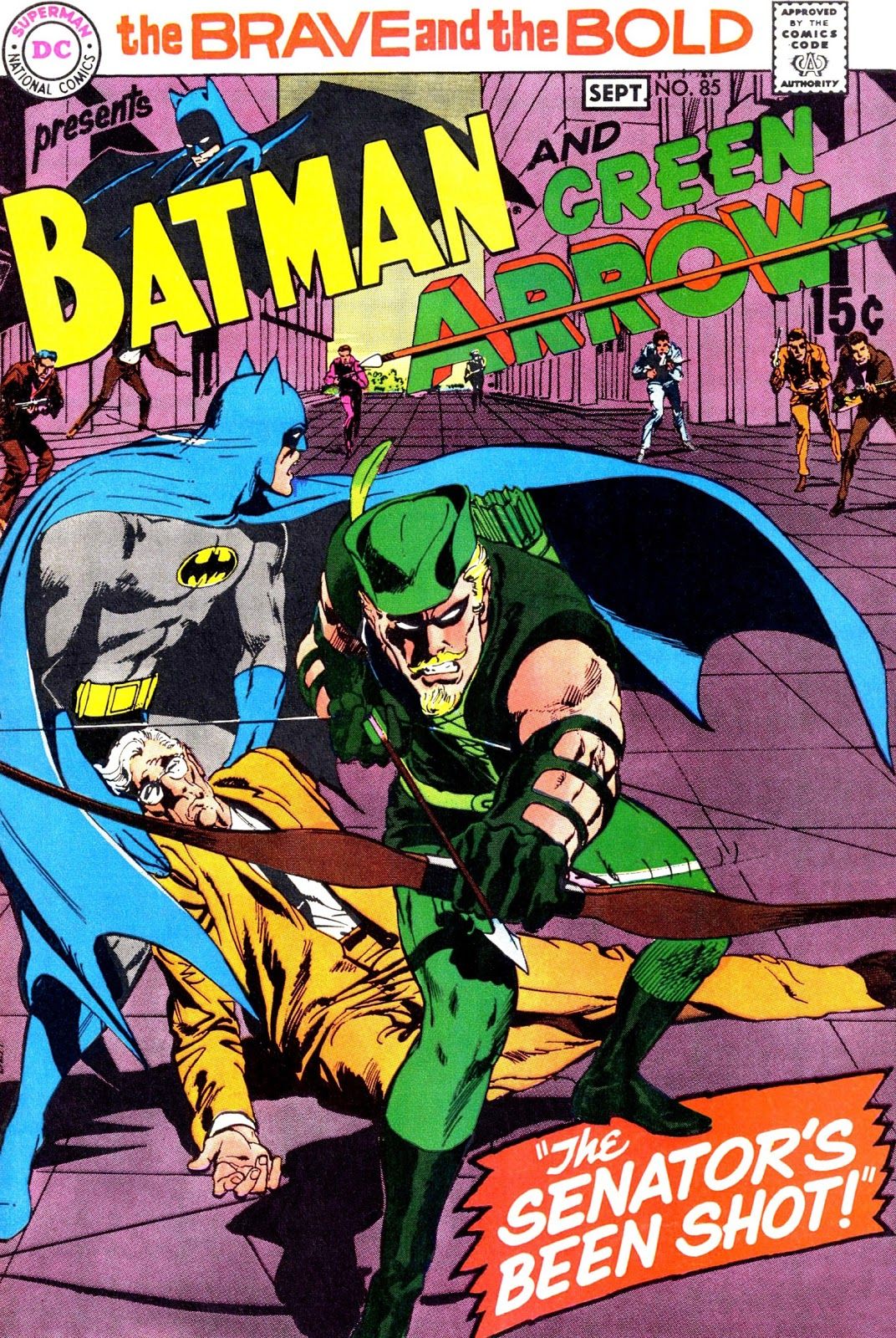This is a brand-new feature, Gonna Make a Change, which takes a look at the odd evolution that comic book series used to make. You see, nowadays, when a comic book series wants to re-tool, comic book companies simply cancel the book and start a brand-new series (heck, change a creative team and books will often reboot). In the old days, however, comic book companies felt that they had too much capital invested in the higher numbers and wanted to avoid starting over with a new #1. So we got to see some weird changes over the years.
We begin our look at this sort of comic book series evolution with The Brave and the Bold.
In 1955, DC Comics was in an interesting place in its history. They were calling themselves Superman-DC Comics as a company (while still officially being called National Comics)...
And Superman was still by FAR their biggest book. Like, by FAR. The book was still essentially printing money at this point in its history. At the same time, Batman was also selling a goodly amount, as well. However, beyond that, their superhero line was incredibly weak. They were a very diverse comic book publishing company at the time. In fact, that likely played a role in why they really did not mind the Comics Code all that much, as it did not really have that big of an effect on them, as they were so diversified that they didn't need any one type of comic book (and thus, could help push to get that one type of comic eliminated from their competitors).
In May 1955, here are the 32 titles that National Comics released:
A Date With Judy Vol 1 46
Action Comics Vol 1 204
Adventure Comics Vol 1 212
Adventures of Bob Hope Vol 1 32
Adventures of Dean Martin and Jerry Lewis Vol 1 21
All-American Men of War Vol 1 21
All-Star Western Vol 1 82
Big Town Vol 1 33
Congo Bill Vol 1 5
Detective Comics Vol 1 219
Dodo and the Frog Vol 1 84
Girls' Romances Vol 1 32
Heart Throbs Vol 1 43
Hopalong Cassidy Vol 1 101
House of Mystery Vol 1 38
Leading Screen Comics Vol 1 75
Leave it to Binky Vol 1 47
Mr. District Attorney Vol 1 45
My Greatest Adventure Vol 1 3
Nutsy Squirrel Vol 1 65
Our Army at War Vol 1 34
Peter Panda Vol 1 11
The Raccoon Kids Vol 1 56
Real Screen Comics Vol 1 86
Secret Hearts Vol 1 27
Star Spangled War Stories Vol 1 33
Strange Adventures Vol 1 56
Superman's Pal, Jimmy Olsen Vol 1
Superman Vol 1 97
Tomahawk Vol 1 32
Wonder Woman Vol 1 74
World's Finest Vol 1 76
See? They were ALL over the place, so they were always looking to add new genres to try them out.
Thus, they launched the historical adventure drama anthology series, The Brave and the Bold (edited by Robert Kanigher)....
France Ed Herron and Robert Kanigher were the writers on the first issue, but more important were the artists, as the writers varied in these early issues.
You had Russ Heath on The Golden Gladiator...
Joe Kubert on The Viking Prince...
and Irv Novick on The Silent Knight...
Five issues in, Bob Haney and Irv Novick introduced a fourth character to the mix with Robin Hood...
Here's where things got weird. Since there were now more characters than features, one character had to sit out every issue, but they kept Heath, Kubert and Novick as the main three artists, so they would have to alternate on drawing different features. Like, if Novick is drawing Robin Hood in a given issue, then there might be no Golden Gladiator and then Heath draws Silent Knight. That sort of thing.
However, right around the time that Robin Hood debuted, DC launched a new series called Showcase, which was designed to work as a try-out series. The fourth issue of that launched a ravamped version of the Flash and it was a huge success.
DC was now going through a bit of a superhero revival, and that revival (and the try-out approach) soon took over The Brave and the Bold, as well...
Page 2: [valnet-url-page page=2 paginated=0 text='Try-outs for everyone!']
The first new feature to give The Brave and the Bold a try was Suicide Squad, by Robert Kanigher, Ross Andru and Mike Esposito...
After its three issues were up, the next try-out feature came in and it was the first superhero feature in the series and it was just a bit more successful...
You see, though, the EDITORS of the book ALSO alternated with the stories, and different editors had different approaches and priorities. Kanigher continue to edit himself on Suicide Squad. Then Julius Schwartz launched the Justice League. Then Jack Schiff took over for three issues and he went back to the non-superhero stories with Cave Carson...
Then Schwartz was back and so was the superhero approach, with Hawkman...
Then Cave Carson, the Suicide Squad and Hawkman each got return try-outs, before finally the try-out era of the title ended with a Julius Schwartz-edited try-out for an idea he kept trying to push over the years - Strange Sports Stories...
Okay, now with 1963's Brave and the Bold #50 coming up, things changed up again. Murray Boltinoff and George Kashdan took over as the more or less regular editors (Kanigher and Schwartz still edited the occasional issue here and there) and they made the book a superhero team-up book, like World's Finest Comics, only with a rotating cast of characters...
Those famed team-up partners, Green Arrow and Martian Manhunter, launched the concept...
One of the early team-ups, Robin/Kid Flash/Aqualad...
soon led to the creation of the Teen Titans...
Issues #57-58 briefly went back to being a try-out feature for a new offbeat superhero by Bob Haney and Ramona Fradon called Metamorpho...
Then a funny thing happened. The Batman TV series came out and suddenly, Batman was appearing in pretty much every team-up issue...
But then they tried to briefly go back to other superheroes teaming up...
before finally committing to being only Batman teaming up with other heroes in 1967's Brave and the Bold #74.
The series would remain under that set-up until 1983, when the book was canceled to make room for Batman and the Outsiders (Jim Aparo, longtime Brave and the Bold, artist who joined the series around #98, left the book to launch Batman and the Outsiders with Mike W. Barr).
During Batman's time as the star of the comic, we also saw a couple of major milestones. First, in #79, Neal Adams' first Batman story...
and six issues later, Neal Adams dramatically re-designed Green Arrow...
Quite a ride for the series as a whole and some major changes to the set-up over the years.
Okay, folks, if you have suggestions for comic book series whose evolution you'd like to see me spotlight, just drop me a line at brianc@cbr.com!

